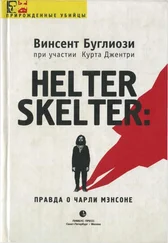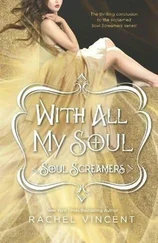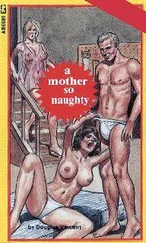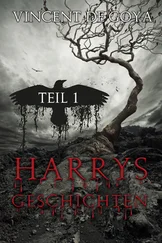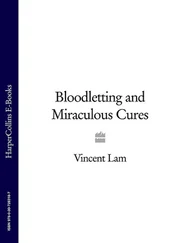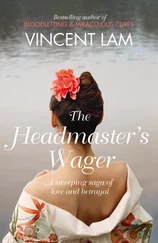LAPD located some, but not all, of the former employees. (None had ever changed the bluing agent.) Fortunately, Kanarek apparently had no better luck.
Hughes had only a few questions for Koenig, but they were devastating.
Q.“Now, Sylmar is predominantly a white area, is it not?”
A.“Yeah, I guess so.”
Q.“Sylmar is not a black ghetto, is it?”
A.“No.”
According to Linda, Manson had wanted a black to find the wallet and use the credit cards, so blacks would be blamed for the murders. My whole theory of the motive was based on this premise. Why, then, had Manson left the wallet in a white area?
In point of fact, the freeway exit Manson had taken was immediately north of Pacoima, the black ghetto of the San Fernando Valley. I tried to get this in through Koenig, but defense objections kept it out, and I later had to call Sergeant Patchett to so testify.
With a single witness, a service-station attendant, the defense—specifically Kanarek and Hughes—had almost knocked two huge holes in the prosecution’s case.
By now I had narrowed down my opponents. Fitzgerald made a good appearance but rarely scored. Shinn was likable. For his first trial Hughes was doing damn well. But it was Irving Kanarek, whom most members of the press considered the trial’s buffoon, who was scoring nearly all the points. Time and again Kanarek succeeded in keeping out important evidence.
For example, when Stephanie Schram took the stand, Kanarek objected to her testimony regarding the “murder school” Manson had conducted at Barker Ranch, and Older sustained Kanarek’s objection. Though I disagreed with Older’s ruling, there was no way I could get around it.
On direct Stephanie had testified that she and Manson returned to Spahn Ranch from San Diego in a cream-colored van on the afternoon of Friday, August 8. On cross-examination Fitzgerald asked her: “Could you be mistaken one day?” This indicated to me that Manson might still be planning to go alibi, so on redirect I brought in the traffic ticket they had been given the previous day. With the August 8 arrest report on Brunner and Good, which contained the license number of the same van, I was now ready to demolish Charlie if the defense claimed he wasn’t even in Southern California at the time of the murders.
Yet I had no way of knowing whether Manson might have his own surprise bombshell, which he was waiting to explode.
As it happened, he had.
Sergeant Gutierrez, on the “HELTER SKELTER” door. DeWayne Wolfer, on the sound tests he’d conducted at the Tate residence. Jerrold Friedman, on the last telephone call Steven Parent made. Roseanne Walker, on Atkins’ remarks about the eyeglasses. Harold True, on Manson’s visits to the house next to the LaBianca residence. Sergeant McKellar, on Krenwinkel’s attempts to avoid recognition just prior to her arrest in Mobile, Alabama. Bits and pieces, but cumulative. And eventually, I hoped, convincing.
Only a few prosecution witnesses remained. And I still didn’t know what the defense would be. Although the prosecution had to give the defense a list of all our witnesses, the defense had no such obligation. Earlier Fitzgerald had told the press that he intended to call thirty witnesses, among them such celebrities as Mama Cass, John Phillips, and Beatle John Lennon, the latter to testify as to how he interpreted his own song lyrics. But that, and the rumors that Manson himself planned to testify, were the only clues to the defense. And even Manson’s testifying was an iffy thing. In my talks with Charlie, he seemed to vacillate. Maybe I’ll testify. Maybe I won’t. I continued to goad him, but was worried that perhaps I’d overplayed my hand.
The defendants hadn’t been in court since Manson’s attack on the judge. The day Terry Melcher was to testify, however, Older permitted their return. Not wanting to face Manson, Terry asked me, “Can’t I go back in the lockup and testify through the speaker?”
Of all the prosecution witnesses, Melcher was the most frightened of Manson. His fear was so great, he told me, that he had been under psychiatric treatment and had employed a full-time bodyguard since December 1969.
“Terry, they weren’t after you that night,” I tried to reassure him. “Manson knew you were no longer living there.”
Melcher was so nervous, however, that he had to be given a tranquilizer before taking the stand. Though he came over somewhat weaker than in our interviews, when he finished his testimony, he told me, with evident relief, that Manson had smiled at him, therefore he couldn’t be too unhappy with what he’d said.
Kanarek, probably at Manson’s request, did not question Melcher. Hughes brought out that when Wilson and Manson drove Terry to the gate of 10050 Cielo Drive that night, they probably saw him push the button. The defense could now argue that if Manson was familiar with the gate-operating device, it would be unlikely he’d have the killers climb over the fence, as Linda claimed they had.
By this time I had proof that both Watson and Manson had been to 10050 Cielo Drive on a number of occasions before the murders. But the jury would never hear it.
Some months earlier I’d learned that after Terry Melcher had moved out of the residence, but before the Polanskis had moved in, Gregg Jakobson had arranged for Dean Moorehouse, Ruth Ann Moorehouse’s father, to stay there for a brief period. During this time Tex Watson had visited Moorehouse at least three, and possibly as many as six, times. In a private conversation with Fitzgerald, I informed him of this (which I had a legal obligation to do) and he replied that he already knew it. Though I intended to introduce this evidence during the Watson trial, I didn’t want to bring it in during the current proceedings, and I was hoping that Fitzgerald wouldn’t either, since it emphasized the Watson rather than the Manson link. Although I suspected that Manson had visited there also during the same period, I had no proof of this until the trial was well under way, when I learned from the best possible source that Manson had been to 10050 Cielo Drive “on five or six occasions.” My source was Manson himself, who admitted this to me during one of our rap sessions. Manson denied, however, having been in the house itself. He and Tex went up there, he said, to race dune buggies up and down the hills.
But I couldn’t use this information against Manson, because, as he well knew, all of my conversations with him were at his insistence and he was never advised of his constitutional rights.
It was a decidedly curious situation. Although Manson had vowed to kill me, he still asked to see me periodically—to rap.
Equally curious were our conversations. Manson told me, for example, that he personally believed in law and order. There should be “rigid control” by the authorities, he said. It didn’t matter what the law was—right and wrong being relative—but it should be strictly enforced by whoever had the power. And public opinion should be suppressed, because part of the people wanted one thing, part another.
“In other words, your solution would be a dictatorship,” I remarked.
“Yes.”
He had a simple solution to the crime problem, Manson told me. Empty the prisons and banish all the criminals to the desert. But first brand their foreheads with X’s, so if they ever appeared in the cities they could be identified and shot on sight.
“Do I need two guesses as to who’s going to be in charge of them in the desert, Charlie?”
“No.” He grinned.
On another occasion, Manson told me that he had just written to President Nixon, asking him to turn over the reins of power to him. If I was interested, I could be his vice-president. I was a brilliant prosecutor, he said, a master with words, and, “You’re right on about a lot of things.”
Читать дальше

